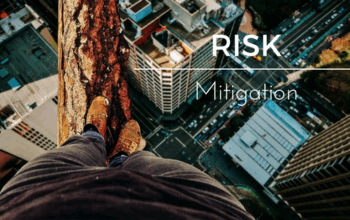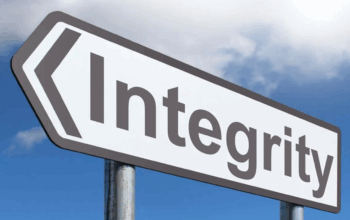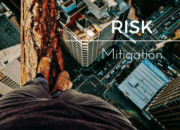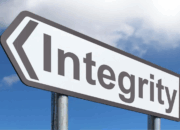In an increasingly complex and interconnected world, the need for protection has never been more paramount. From safeguarding our personal finances and digital identities to ensuring the well-being of our families and businesses, a proactive approach to security is no longer a luxury but an absolute necessity. The landscape of risks is constantly evolving, requiring us to adopt smart strategies that are both comprehensive and adaptable. This article delves deep into the multifaceted realm of modern protection, exploring the critical areas that demand our attention, the cutting-edge strategies and tools available, the psychological and societal underpinnings of security, and the future trends that will continue to shape how we defend what matters most.
The Evolving Landscape of Risk
Understanding the nature of threats is the first step toward effective protection. The dangers we face today are far more diverse and sophisticated than ever before, extending beyond traditional physical threats to encompass insidious digital vulnerabilities and complex financial hazards.
A. Digital Dangers
The digital revolution, while bringing unprecedented convenience, has also opened new frontiers for malevolent actors. Our lives are increasingly online, making us susceptible to a myriad of cyber threats.
- Cybercrime: This broad category includes a range of illicit activities conducted via computer networks.
- Phishing: Deceptive attempts to trick individuals into revealing sensitive information (passwords, credit card numbers) often via fake emails or websites.
- Malware: Malicious software (viruses, ransomware, spyware) designed to disrupt computer operations, steal data, or gain unauthorized access.
- Identity Theft: The fraudulent acquisition and use of a person’s private identifying information for financial gain. This can lead to ruined credit scores, unauthorized purchases, and significant emotional distress.
- DDoS Attacks (Distributed Denial of Service): Overwhelming a system with traffic to disrupt its service, often targeting businesses or critical infrastructure.
- Data Breaches: Large-scale compromises of databases containing sensitive personal or corporate information. These can expose millions of records, leading to widespread identity theft and financial fraud.
- Privacy Concerns: The pervasive collection and use of personal data by corporations and governments raise significant questions about individual privacy and autonomy. Understanding how our data is used and controlling its footprint is a crucial aspect of modern protection.
B. Financial Vulnerabilities
Economic volatility, sophisticated scams, and the complexity of modern financial products present unique challenges to our financial security.
- Investment Scams: Deceptive schemes promising high returns with little risk, often leading to total loss of capital. These can range from Ponzi schemes to fraudulent cryptocurrency investments.
- Credit Card Fraud: Unauthorized use of credit or debit card information, leading to financial losses and potential credit damage.
- Loan Sharks and Predatory Lending: Unscrupulous lenders offering high-interest loans with exploitative terms, trapping individuals in cycles of debt.
- Economic Downturns: Recessions, inflation, and market crashes can erode savings and investments, necessitating robust financial planning and diversification strategies.
- Retirement Savings Erosion: Inadequate planning or poor investment choices can jeopardize financial security in later life, highlighting the need for long-term protection strategies.
C. Physical and Personal Threats
Despite the rise of digital dangers, traditional physical and personal threats remain a significant concern.
- Home Security: Burglary, theft, and unauthorized entry remain prevalent, requiring robust physical and technological deterrents.
- Personal Safety: Protecting oneself and loved ones from assault, harassment, or other forms of violence in public or private spaces.
- Health Risks: Unexpected illnesses, accidents, and chronic conditions can lead to devastating financial burdens and quality-of-life issues without adequate health protection.
- Natural Disasters: Floods, earthquakes, fires, and extreme weather events pose significant threats to property and life, demanding preparedness and appropriate coverage.
- Vehicle Theft and Damage: Protecting one’s automotive assets from theft, vandalism, and collision.
Pillar I: Digital Fortification Strategies
Given the pervasive nature of digital threats, building an unassailable digital defense is foundational to modern protection.
A. Robust Password Management
The weakest link in cybersecurity is often poor password hygiene. Strong, unique passwords are your first line of defense.
- Complex Passwords: Utilize a combination of uppercase and lowercase letters, numbers, and symbols. Aim for a minimum of 12-16 characters.
- Unique Passwords for Each Account: Never reuse passwords across multiple services. A breach on one site shouldn’t compromise all your accounts.
- Password Managers: Employing a reputable password manager (e.g., LastPass, 1Password, Bitwarden) is crucial. These tools securely generate, store, and auto-fill complex passwords, requiring you to remember only one master password.
- Regular Updates: Change critical passwords periodically, especially for financial and email accounts.
B. Multi-Factor Authentication (MFA) Implementation
MFA adds an essential layer of security by requiring a second form of verification beyond just a password.
- Authentication Apps: Use apps like Google Authenticator or Authy for time-based one-time passwords (TOTP). This is generally more secure than SMS-based MFA.
- Physical Security Keys: Hardware tokens (e.g., YubiKey) offer the highest level of MFA security, as they require physical possession.
- Biometrics: Fingerprint scans or facial recognition (e.g., Face ID) can serve as a convenient second factor.
Always enable MFA on all supported accounts, especially email, banking, social media, and any service containing sensitive information.
C. Software Updates and Antivirus Protection
Keeping your software current and employing protective software are non-negotiable.
- Operating System Updates: Install updates for Windows, macOS, Android, and iOS immediately. These often contain critical security patches that close vulnerabilities exploited by attackers.
- Application Updates: Keep all software applications (browsers, productivity suites, media players) updated.
- Reputable Antivirus/Anti-Malware Software: Install and regularly update comprehensive antivirus software on all devices (computers, smartphones) to detect and remove malicious threats. Enable real-time scanning.
- Firewall Configuration: Ensure your operating system’s firewall is enabled and properly configured to block unauthorized network access.
D. Secure Network Practices
Your internet connection is a potential gateway for threats.
- Strong Wi-Fi Passwords: Use WPA2 or WPA3 encryption for your home Wi-Fi network with a strong, unique password.
- Public Wi-Fi Caution: Avoid conducting sensitive transactions (banking, shopping) on public Wi-Fi networks. If necessary, use a Virtual Private Network (VPN).
- VPN Usage: A VPN encrypts your internet traffic, providing a secure tunnel for your data, especially useful when connecting to unsecure networks.
- Router Security: Change default router credentials, disable remote management if not needed, and keep router firmware updated.
E. Data Backup and Recovery
Even with the best defenses, breaches or data loss can occur. A robust backup strategy is crucial.
- 3-2-1 Backup Rule: Maintain at least three copies of your data, store them on two different types of media, and keep one copy off-site (e.g., cloud storage, external hard drive stored elsewhere).
- Encrypted Backups: Encrypt your backups to protect sensitive information in case the backup media falls into the wrong hands.
- Regular Testing: Periodically test your backups to ensure they are restorable and intact.
Pillar II: Financial Resilience Strategies
Protecting your financial well-being requires a multi-pronged approach, balancing proactive planning with diligent monitoring.
A. Budgeting and Emergency Fund Creation
The foundation of financial security is sound money management.
- Detailed Budgeting: Understand your income and expenses to identify where your money is going. Tools and apps can simplify this process.
- Emergency Fund: Aim to save 3-6 months’ worth of living expenses in an easily accessible, liquid account (e.g., high-yield savings account). This acts as a critical buffer against unexpected job loss, medical emergencies, or large unforeseen expenses.
- Debt Management: Prioritize paying down high-interest debt (credit cards, personal loans) as quickly as possible to reduce financial vulnerability.
B. Prudent Investment and Diversification
Protecting your wealth means making informed investment choices.
- Diversification: Spread your investments across different asset classes (stocks, bonds, real estate, commodities) and geographies to mitigate risk. Don’t put all your eggs in one basket.
- Understand Risk Tolerance: Invest according to your personal risk tolerance and time horizon. Don’t chase unrealistic returns.
- Professional Advice: Consider consulting a certified financial planner for personalized advice, especially for complex investment strategies or retirement planning.
- Regular Review: Periodically review your investment portfolio and adjust as life circumstances or market conditions change.
C. Credit Monitoring and Fraud Alerts
Vigilance is key to detecting financial fraud early.
- Regular Credit Reports: Obtain your free annual credit report from major credit bureaus (Experian, Equifax, TransUnion) to check for inaccuracies or fraudulent activity.
- Credit Monitoring Services: Consider subscribing to a credit monitoring service that alerts you to changes in your credit file.
- Bank and Credit Card Alerts: Set up alerts with your financial institutions for suspicious activity, large transactions, or international purchases.
- Review Statements Meticulously: Scrutinize bank and credit card statements every month for any unauthorized charges.
D. Strategic Insurance Coverage
Insurance acts as a crucial safety net, protecting against unforeseen catastrophic events.
- Health Insurance: Essential to protect against exorbitant medical costs. Understand your policy’s coverage, deductibles, and out-of-pocket maximums.
- Life Insurance: Provides financial security for dependents in the event of your death, ensuring their ongoing support.
- Homeowner’s/Renter’s Insurance: Protects your property and belongings from damage, theft, and liability claims.
- Auto Insurance: Mandatory in most places, it covers damage to your vehicle, other vehicles, and liability in case of an accident.
- Disability Insurance: Replaces a portion of your income if you become unable to work due to illness or injury.
- Umbrella Insurance: Provides additional liability coverage beyond the limits of your standard home or auto policies, offering broader protection against major lawsuits.
E. Tax Planning and Estate Planning
Protecting your assets extends to how they are handled during your lifetime and beyond.
- Proactive Tax Planning: Work with a tax professional to optimize your tax situation, take advantage of legitimate deductions, and avoid costly errors.
- Estate Planning: Create a will, set up trusts if appropriate, and designate beneficiaries to ensure your assets are distributed according to your wishes and to minimize potential disputes or taxes for your heirs.
- Power of Attorney: Designate trusted individuals to make financial and healthcare decisions on your behalf if you become incapacitated.
Pillar III: Physical and Personal Security Measures
While digital and financial security are paramount, traditional physical protection remains a vital component of a comprehensive strategy.
A. Home Security Systems
Securing your domicile creates a safe haven and deters intruders.
- Layered Approach: Combine multiple security elements for maximum effectiveness.
- Robust Locks: Install high-quality deadbolts on all exterior doors.
- Alarm Systems: Invest in a monitored alarm system that alerts security companies or law enforcement in case of a breach. Modern systems often integrate with smart home technology.
- Smart Security Cameras: Install cameras with motion detection and remote viewing capabilities to monitor your property.
- Lighting: Utilize motion-activated exterior lighting to deter intruders and illuminate dark areas.
- Landscaping: Maintain clear sightlines around your home, avoiding tall shrubs or fences that can provide cover for intruders.
B. Personal Safety Awareness and Preparedness
Being aware of your surroundings and having a plan are crucial for personal protection.
- Situational Awareness: Pay attention to your environment, notice unusual behavior, and trust your instincts. Avoid distractions like excessive phone use in public.
- Self-Defense Training: Consider taking self-defense classes to learn practical techniques and build confidence.
- Emergency Contacts: Keep an easily accessible list of emergency contacts on your phone and with you.
- Travel Safety: When traveling, research safe areas, inform someone of your itinerary, and be mindful of local customs and potential risks.
- Online Presence Review: Be mindful of what you share publicly online, as it can inadvertently reveal your location or habits, making you a target.
C. Health and Wellness Protection
Your physical and mental health are fundamental assets that require proactive protection.
- Preventative Healthcare: Regular check-ups, screenings, and vaccinations are crucial for early detection and prevention of diseases.
- Healthy Lifestyle: Maintain a balanced diet, engage in regular physical activity, and prioritize adequate sleep to boost your immune system and overall resilience.
- Stress Management: Implement strategies to manage stress, as chronic stress can negatively impact physical and mental health. This might include meditation, hobbies, or therapy.
- Mental Health Support: Don’t hesitate to seek professional help for mental health concerns. Protecting your mental well-being is as important as physical health.
- First Aid Knowledge: Learn basic first aid and CPR; these skills can be life-saving in an emergency.
D. Disaster Preparedness
Anticipating and preparing for natural or man-made disasters is a critical protective measure.
- Emergency Kit: Assemble a kit with at least three days’ supply of water, non-perishable food, first-aid supplies, a flashlight, batteries, a whistle, and essential documents.
- Emergency Plan: Develop a family emergency plan, including designated meeting points, communication strategies, and evacuation routes.
- Stay Informed: Monitor local weather alerts and official emergency broadcasts.
- Home Hardening: Implement measures to make your home more resilient to specific local risks (e.g., flood barriers, hurricane shutters, earthquake bracing).
The Psychological Dimension of Security
Beyond the tangible tools and strategies, protection also involves a crucial psychological component – fostering a mindset of preparedness without succumbing to paranoia.
A. Cultivating a Security Mindset
This involves being proactively aware of potential risks without living in constant fear. It’s about being informed, not alarmed.
- Risk Assessment: Regularly assess your personal and professional risk profile. What are you most vulnerable to? What are the most likely threats?
- Continuous Learning: Stay updated on the latest security threats and best practices. The landscape of risk is dynamic.
- Skepticism and Critical Thinking: Develop a healthy skepticism towards unsolicited offers, suspicious emails, or unverified information. If something seems too good to be true, it probably is.
- Resilience Building: Understand that perfect security is unattainable. Focus on building resilience – the ability to recover quickly from adverse events.
B. Balancing Convenience and Security
Often, security measures introduce friction into our daily lives (e.g., strong passwords, MFA). Finding the right balance is key to sustainable protection.
- Layered Security: Implement security in layers, so if one defense fails, others are still in place. This allows for convenience where appropriate while maintaining critical protection.
- Automated Security: Leverage tools that automate security tasks (e.g., password managers, automatic software updates) to reduce user burden.
- User Education: Educating oneself and others about security risks and best practices is more effective than implementing overly restrictive policies that lead to workarounds.
Future Trends in Protection Strategies
The field of security is constantly evolving, driven by technological advancements and the escalating sophistication of threats.
A. AI and Machine Learning in Cybersecurity
AI and ML are revolutionizing threat detection and response.
- Behavioral Analytics: AI can analyze user and network behavior to detect anomalies indicative of a cyberattack, even zero-day exploits.
- Automated Threat Response: ML-powered systems can automatically isolate threats, patch vulnerabilities, or block malicious traffic in real-time, greatly reducing response times.
- Predictive Security: AI can analyze threat intelligence to predict future attack vectors and proactively strengthen defenses.
B. Biometric Authentication Expansion
Beyond fingerprints and facial recognition, biometrics are set to become even more pervasive and sophisticated.
- Vein Recognition: Highly secure method based on unique vein patterns under the skin.
- Behavioral Biometrics: Analyzing unique typing patterns, mouse movements, or gait to authenticate users continuously.
- Multi-Modal Biometrics: Combining several biometric factors for enhanced security and reliability.
C. Quantum-Resistant Cryptography
As quantum computing advances, current encryption methods could theoretically be broken. Research is heavily focused on quantum-resistant cryptography to protect sensitive data in the long term, impacting everything from secure communications to financial transactions.
D. Integrated Security Platforms
The future will likely see more consolidated security platforms that offer unified management of digital, physical, and personal security aspects, simplifying protection for individuals and organizations.
- Smart Home Security Hubs: Integrating cameras, alarms, smart locks, and environmental sensors under one intelligent system.
- Unified Digital Identity Management: Platforms that securely manage all your online identities and permissions.
E. Proactive Threat Intelligence
Instead of reacting to attacks, the focus will increasingly shift to proactive threat intelligence – identifying potential attackers, understanding their methods, and preemptively fortifying defenses. This includes sharing threat data across industries and leveraging AI for global threat mapping.
F. Personal Digital Footprint Management
With the rise of data brokers and AI, managing one’s digital footprint will become even more critical. New tools and services will emerge to help individuals control, limit, and even erase their online data, enhancing privacy and reducing susceptibility to targeted scams.
Conclusion
In a world defined by constant change and evolving risks, the pursuit of protection is not a destination but a continuous journey. Embracing smart strategies that span digital fortification, financial resilience, and personal safety is paramount for safeguarding our well-being and prosperity. From the fundamental steps of strong password hygiene and emergency fund creation to the cutting-edge applications of AI in cybersecurity and advanced biometrics, a layered and adaptive approach is the cornerstone of modern security.
The challenges are real, but the tools and knowledge available for effective protection are more sophisticated than ever. By cultivating a proactive security mindset, staying informed about emerging threats, and thoughtfully integrating technological and behavioral safeguards, individuals and organizations can significantly mitigate risks. As technology continues to reshape our lives, so too will it reshape the landscape of security, promising even more innovative solutions for tomorrow’s challenges. The ultimate smart strategy for protection is persistent vigilance, continuous learning, and an unwavering commitment to defending what truly matters.














